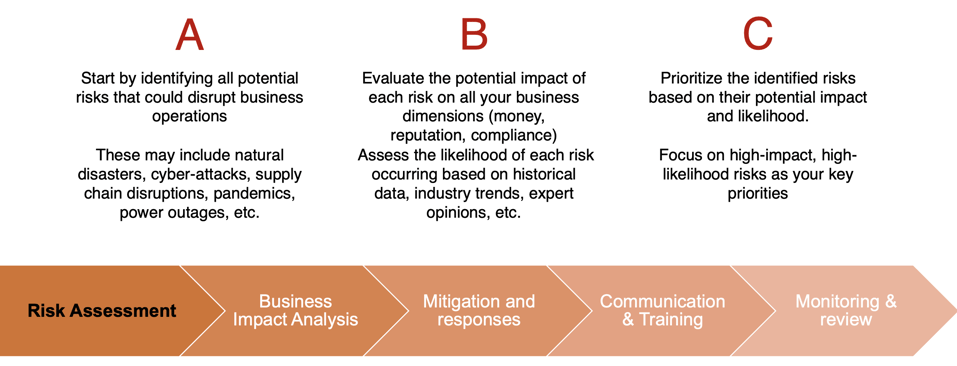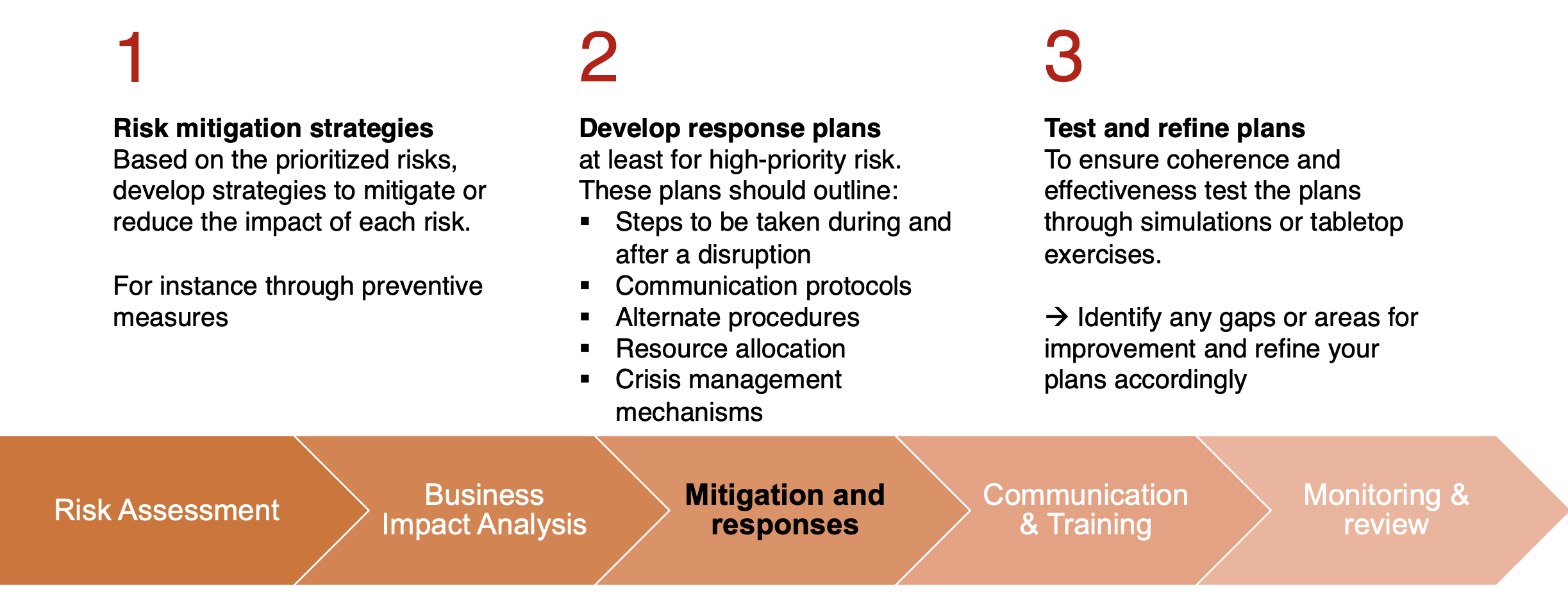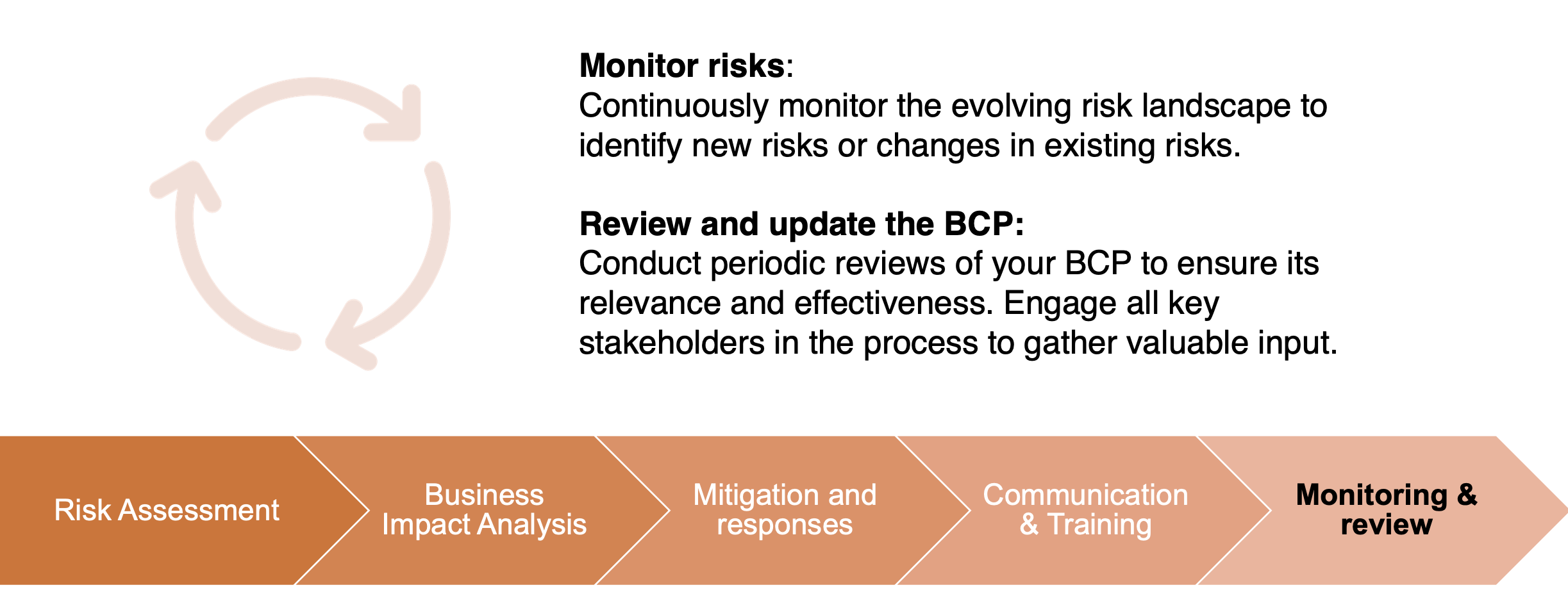Developing and strengthening supply chain resilience require risk governance based on both...
Be prepared: BCP in Pharma Supply Chain
When it comes to orchestrating a Business Continuity Plan (BCP) with a risk-based approach, there are several crucial steps to consider. The first step is identifying and assessing potential risks. This involves conducting a thorough cross-functional analysis of all the factors that could potentially disrupt your business operations. By identifying these risks, you can gain a better understanding of what you need to prepare for.
Once the risks have been identified, the next step is prioritizing them based on their impact and likelihood. This allows you to focus your resources and efforts on the risks that pose the greatest threat to your business. By prioritizing the risks, you can ensure that you are allocating your resources effectively and efficiently.
Next is developing strategies to mitigate or respond to those risks. This involves creating a comprehensive cross-functional plan that outlines the actions and measures that need to be taken to reduce the impact of the identified risks. These strategies may include implementing preventive measures, such as implementing dual sourcing on key materials, or developing contingency plans to address potential disruptions.
By taking a risk-based approach to business continuity planning, you can ensure that your organization is well-prepared to navigate any potential threats or disruptions. It allows you to proactively identify and address risks, making your business more resilient and adaptable in the face of adversity. With a robust Business Continuity Plan in place, you can instill confidence in your stakeholders and maintain the continuity of your operations, even in the most challenging of times.
5 steps approach
-
Risk Assessment
The starting point to design a Business Continuity Plan
-
Business Impact Analysis (BIA)
Second step in designing a BCP
-
Risk Mitigation / Response Strategies
The heart of the BCP
-
Communication and Training
How to make the BCP a reality?
-
Continuous Monitoring and Review
Towards a self-improving process
Risk Assessment

Business Impact Analysis
Identify critical business functions: Determine the critical functions and processes that are essential to operate. These could include customer service, production, IT infrastructure, finance, etc.
Assess impact of disruptions: Analyze the potential impact of disruptions on each critical function. Consider the financial, operational, and reputational consequences of disruptions.
➡️ Recovery time objectives (RTOs) and recovery point objectives (RPOs) for each function
Risk Mitigation and Responses

Communication and Training
Establish communication protocols: Define a communication plan to ensure effective and timely communication during a disruption. This plan should include at least contact details, escalation procedures, and methods of communication.
Train employees: Provide comprehensive training to employees on their roles and responsibilities during a disruption. Ensure they understand the BCP, their specific tasks, and the communication protocols. Regularly conduct training sessions or drills to keep employees prepared.
Monitoring and Review

Key critical factors to make it a success
Management Sponsorship
Ensure management is aligned and supports the BCP need, it will ensure the right priority level in the organization
A real risk methodology
Key risks are identified and known in the organization, a clear process to monitor them is in place
A strong team
The team is motivated and recognizes the importance and is driven by an agile coordination and leadership
Are you interested in securing your business?





